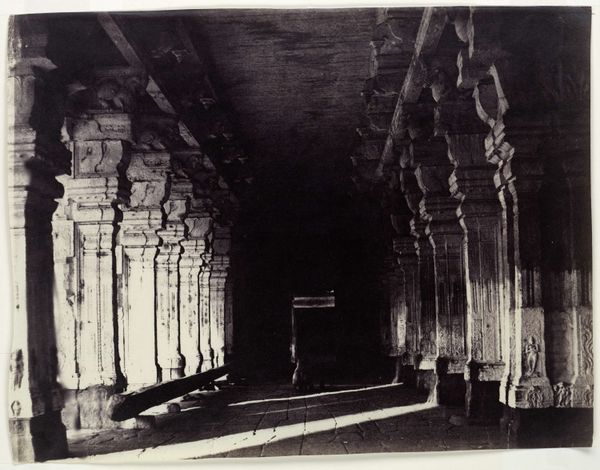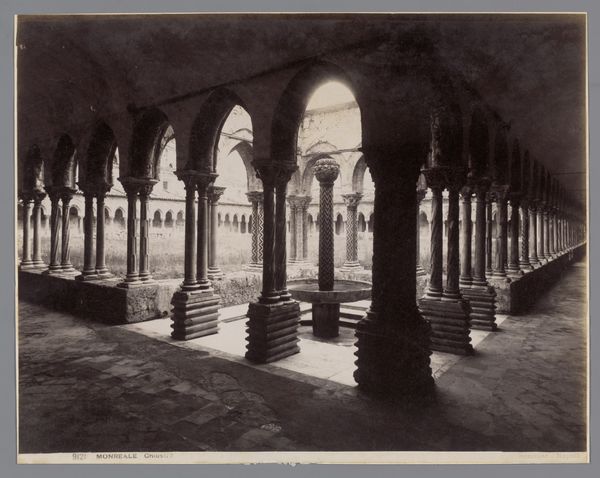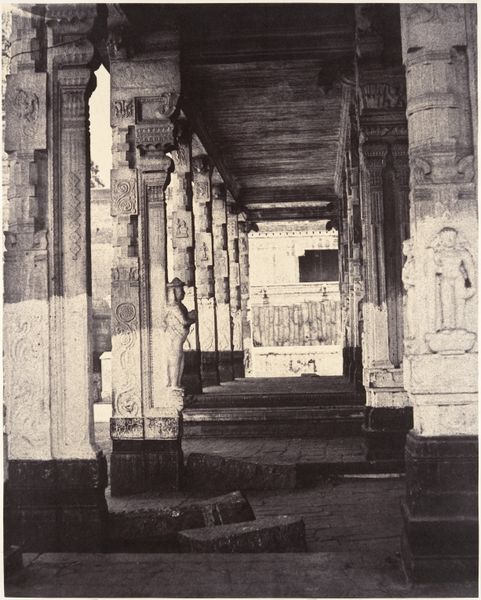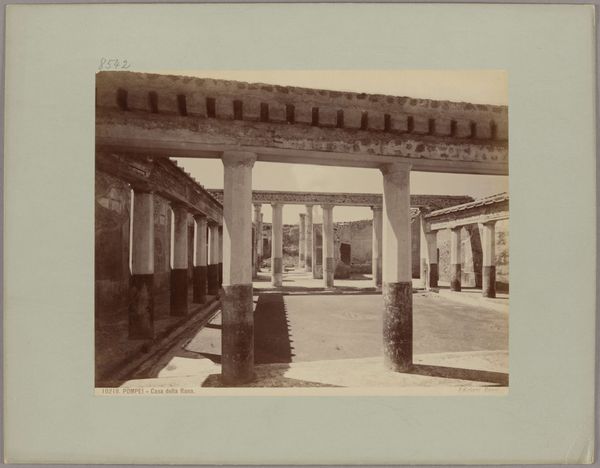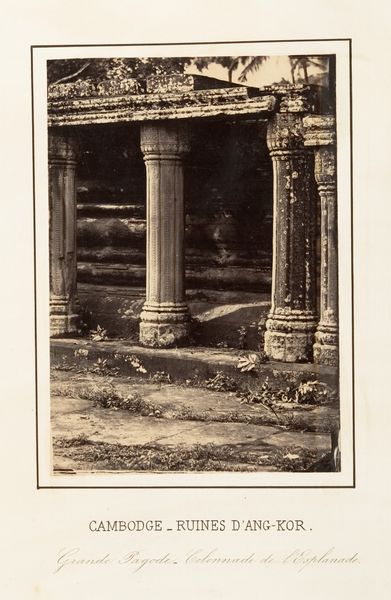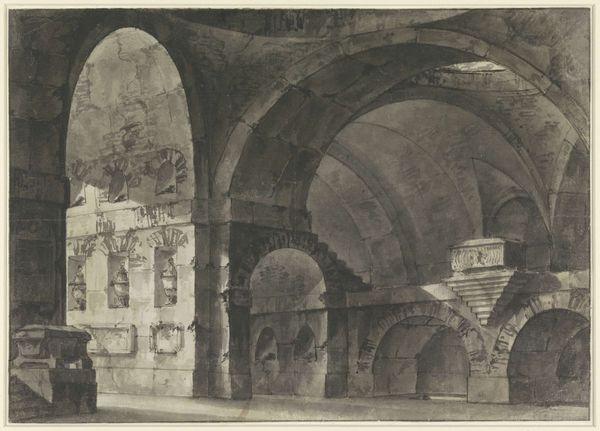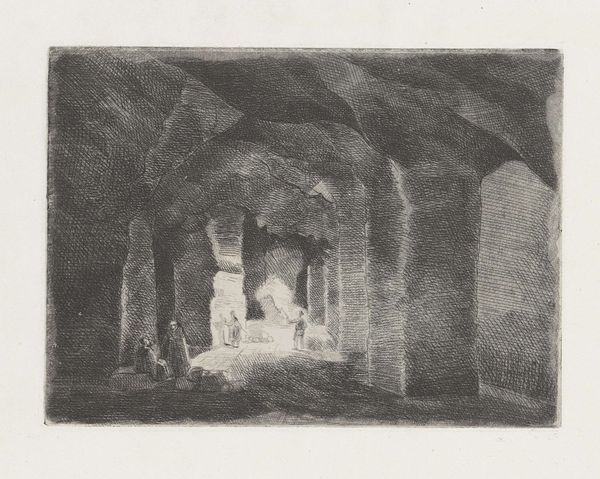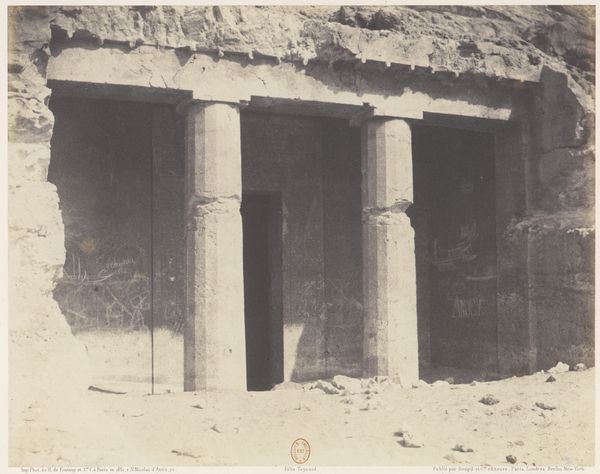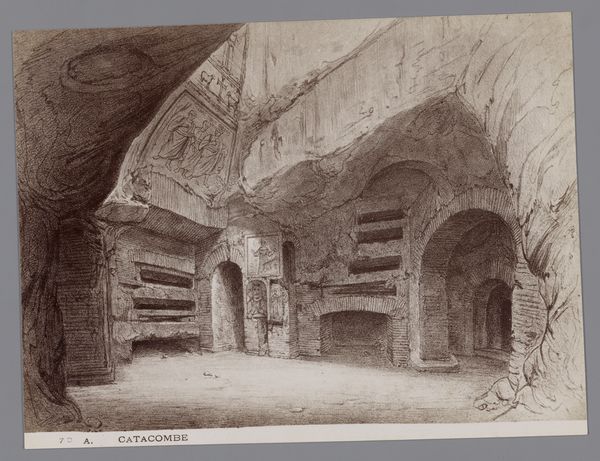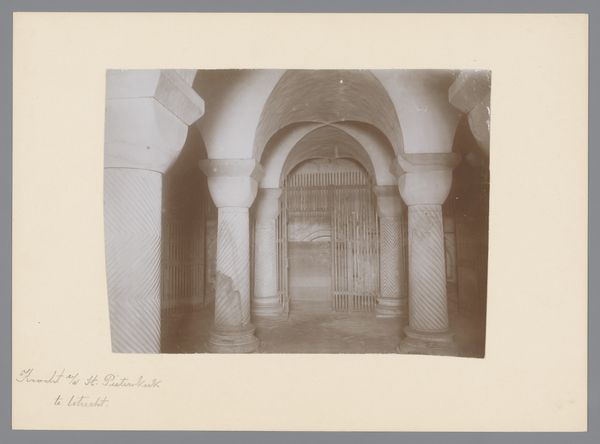
photography, site-specific, gelatin-silver-print
#
landscape
#
photography
#
geometric
#
ancient-mediterranean
#
site-specific
#
gelatin-silver-print
Dimensions: height 189 mm, width 241 mm, height 244 mm, width 329 mm
Copyright: Rijks Museum: Open Domain
Curator: This gelatin silver print, taken between 1895 and 1915 by Clifton & Co., is entitled "Grotten van Elefanta bij Mumbai," or the Elephanta Caves near Mumbai. What strikes you immediately? Editor: An imposing sense of stillness. It feels almost prehistoric, the heavy columns and rough-hewn ceiling give it a timeless, primordial feeling. Curator: Indeed. These caves represent a significant example of Indian rock-cut architecture, filled with symbolism from diverse Hindu and Buddhist beliefs. This particular view captures the cave's pillared hall, known for its elaborate carvings. The photograph itself was taken during a period of increased colonial interest in documenting ancient Indian sites. How might that historical context inform our understanding? Editor: I think that this visual documentation plays a vital role, it serves as an archive preserving the caves cultural significance and the intertwined religious traditions of Hinduism and Buddhism. Each column and carving echoes symbolic forms which in their execution tell stories of ancient philosophical narratives. It is a cultural memory made visible, one of time, belief, and devotion. Curator: Exactly. The very act of photographing the caves speaks to issues of power, representation, and the gaze, which can’t be ignored. Consider, for example, how gender, class, and caste operate within colonial depictions. How do photographs like these, especially disseminated for Western audiences, reinforce particular narratives? Editor: Interesting… For Western audiences, there could be interpretations centered on ideas like Orientalism, portraying the cave as exotic and outside the experience of modernity. However, the photographic medium can transcend and present as a common, foundational heritage that encourages mutual interest in preservation across different cultural landscapes. It acts as an artifact which binds history. Curator: Absolutely. This image presents us not merely a site but invites a complex, and at times uncomfortable conversation regarding its interpretation and cultural significance and about how these spaces reflect, refract, and resist colonial influence and narratives. Editor: This exchange helped me grasp better how one visual source has many layered perspectives of history that require continuous analysis of socio-political settings and cultural symbology. Thank you.
Comments
No comments
Be the first to comment and join the conversation on the ultimate creative platform.

